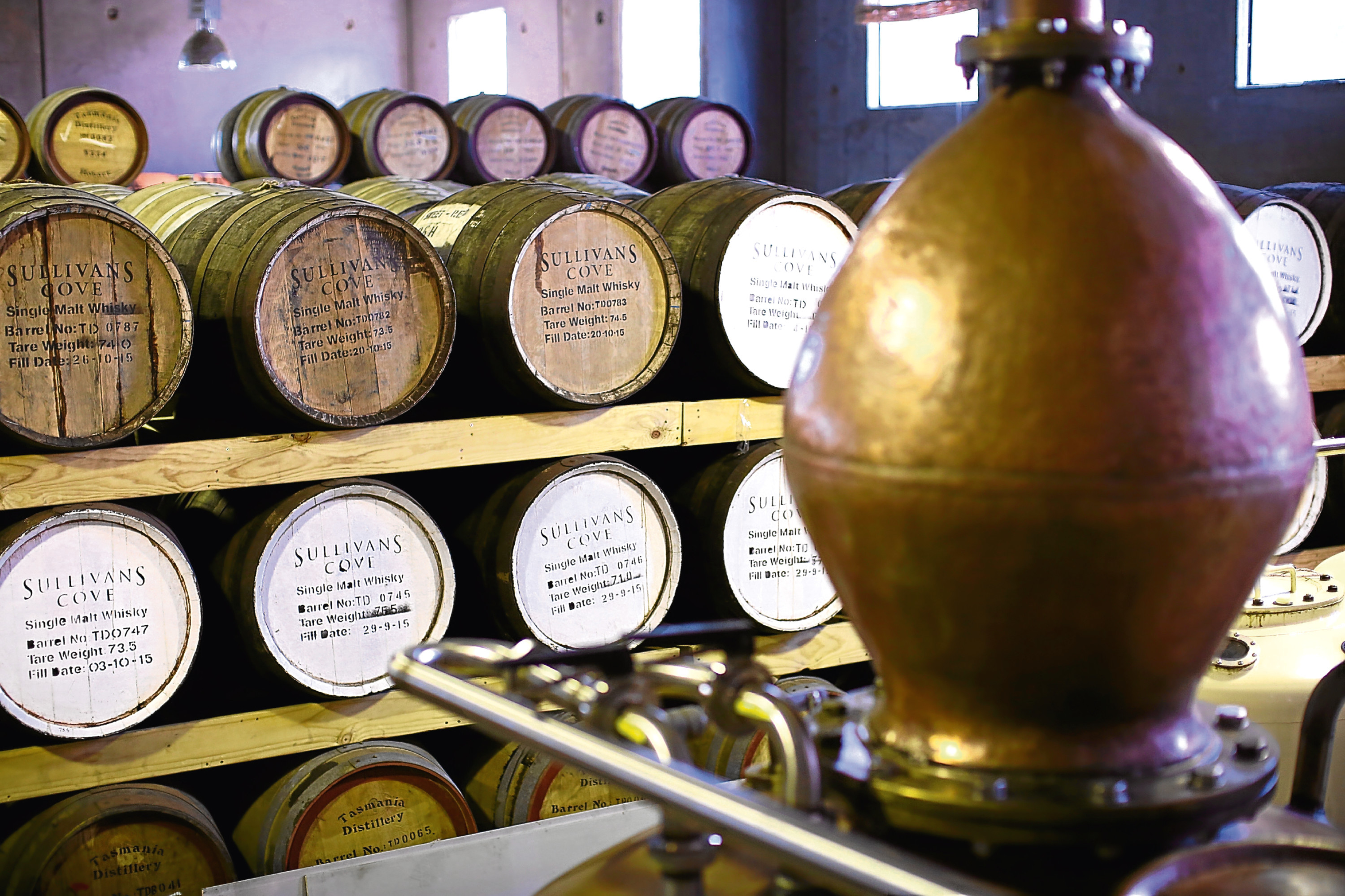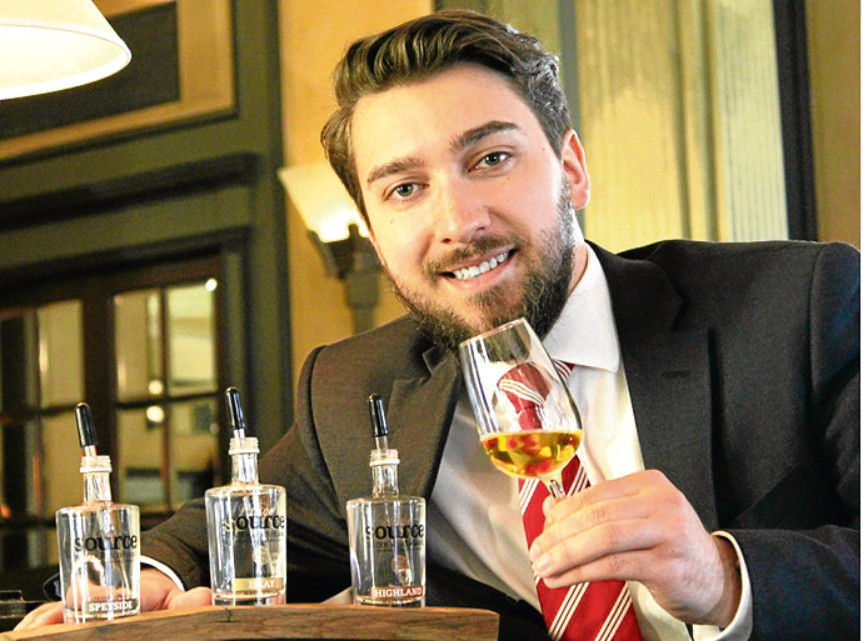
BLAIR BOWMAN, author of The Pocket Guide To Whisky, is an independent whisky writer and consultant.
He founded World Whisky Day in 2012 and has just returned from a world-record attempt to visit 60 Scottish distilleries in 24 hours. He told Tracey Bryce the Honest Truth about “the water of life”.
What’s the history of whisky?
The earliest written record of whisky distillation dates from 1494, at Lindores Abbey in Fife.
Historically, farmers would distil their surplus grain at the end of the harvest season. This distilled spirit was known as uisge beatha or ‘water of life’ in Scottish Gaelic.
The word ‘uisge’ is where the word whisky comes from.
How is whisky made?
Single malt whisky it is made from three ingredients – water, malted barley and yeast.
Mash the water and malted barley together, add the yeast to create alcohol, then distil this to make the spirit.
The spirit must be matured for three years before it can be called whisky.
Is it true that whisky starts off as beer?
Yes, essentially the malted barley and yeast create a liquid known as distiller’s beer. However, I wouldn’t recommend drinking this as it can be a strong laxative.
Normal beer also includes hops.
Can you explain the different types of whisky?
The main types are single malt, single grain and blended.
Blended whisky is made by combining the first two. Single malt is made from malted barley, while single grain is typically made from corn with a bit of malted barley.
Closely related to Scottish whiskies are Kentucky Straight Bourbon (made with corn), Rye (made from a minimum of 51% rye) and Single Pot Still Irish (malted and unmalted barley).
Distilleries as far afield as Japan and Australia make whisky – there’s a world of different flavours to explore, and a dram for everyone’s taste.
What are the best known whiskies?
Some brands have been around for centuries. Single malt whiskies are named after the place the whisky is made, such as Macallan, Bowmore or Glenfiddich.
Blended whisky tends to be named after their founders, such as Johnnie Walker, Dewar’s (after John Dewar) or Bell’s (Arthur Bell).
And the lesser known?
Some hidden gems include Benromach, Arran or Aberfeldy.
What’s the oldest/most expensive whisky?
The oldest whisky is thought to be a 75-year-old Mortlach from 1939. It cost £22,500 a bottle.
I was lucky enough to taste it and it was phenomenally complex but mellow for its age.
The most expensive was a six-litre decanter of Macallan ‘M’. It sold for £393,109 at auction.
Tell us some interesting facts that we might not have known?
At any one time there are roughly 20 million casks of whisky maturing in Scotland.
The equivalent of 39 bottles of whisky are exported every second.
The value of Scotch whisky exports in 2016 was £4 billion.
What qualities should you look for in a good whisky?
It’s a personal thing. It’s hard to find a ‘bad’ whisky. It might just be that it isn’t suited to your tastes.
Should you add water or not?
Water can “open up” a whisky, so do this if you want to analyse it by nosing and tasting.
It will also make it smoother and easier to drink.
Is whisky naturally clear?
Yes, it comes out of the still as clear as water. During maturation it takes on colour from the wooden oak casks.
How long can whisky last after opening?
Whisky will never go off.
Is it most popular in Scotland or elsewhere?
Whisky is exported to more than 180 countries, it is popular in Scotland and the UK, but even more popular abroad. Asia, the US and India are big markets.

Enjoy the convenience of having The Sunday Post delivered as a digital ePaper straight to your smartphone, tablet or computer.
Subscribe for only £5.49 a month and enjoy all the benefits of the printed paper as a digital replica.
Subscribe